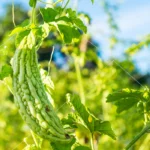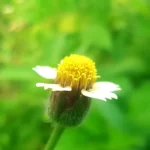Best Fertilizer for Hibiscus Flowers: Understanding the Nutrient Requirements, Types of Fertilizers, and Best Fertilizer Mix
Hibiscus is a beautiful flowering plant that is commonly found in Indian gardens. To ensure the healthy growth and blooming of these plants, it is essential to provide them with the right nutrients. In this article, we will discuss the nutrient requirements of hibiscus plants, different types of fertilizers available for these plants, and the best fertilizer mix that can help achieve optimal growth and blooming.
Understanding the Nutrient Requirements of Hibiscus Plants
Hibiscus plants require three primary nutrients for their growth and development: nitrogen (N), phosphorus (P), and potassium (K). These nutrients are also known as NPK, and they play a crucial role in the overall health and blooming of hibiscus plants.
The Role of Primary Nutrients in Hibiscus Plant Growth
Nitrogen (N) is an essential nutrient that is responsible for the growth and green coloration of leaves. Nitrogen is also required for the development of stems and flowers. A lack of nitrogen can cause stunted growth, yellowing of leaves, and reduced blooming.
Phosphorus (P) is necessary for root development, flower formation, and fruit production. Phosphorus is also important for the transfer of energy within the plant. A deficiency of phosphorus can lead to poor root development, weak stems, and reduced blooming.
Potassium (K) is required for the overall health and vigor of hibiscus plants. Potassium helps in the absorption of other nutrients, improves water efficiency, and enhances disease resistance. A lack of potassium can cause poor growth, weak stems, and reduced blooming.
The Importance of Secondary Nutrients and Micronutrients
Apart from the primary nutrients, hibiscus plants also require secondary nutrients and micronutrients for their healthy growth. Secondary nutrients include calcium (Ca), magnesium (Mg), and sulfur (S), while micronutrients include iron (Fe), manganese (Mn), zinc (Zn), copper (Cu), molybdenum (Mo), and boron (B).
Calcium is required for the development of strong cell walls, while magnesium is necessary for the production of chlorophyll. Sulfur is needed for the synthesis of amino acids, which are essential for plant growth.
Micronutrients are required in small quantities but are essential for the overall health of the plant. Iron is required for chlorophyll synthesis, while manganese is necessary for enzyme activation. Zinc helps in the synthesis of growth hormones, while copper is required for the formation of lignin, which provides structural support to the plant. Molybdenum is needed for the conversion of nitrogen into a usable form, while boron is necessary for the proper development of flowers and fruits.
Understanding the Soil pH and Its Impact on Plant Growth
The pH of the soil plays a crucial role in the availability of nutrients to hibiscus plants. The optimal pH range for hibiscus plants is between 6.0 and 7.0. If the soil pH is too low or too high, it can affect the availability of nutrients to the plant. For example, if the soil pH is too low, it can cause a deficiency of calcium, while a high pH can lead to a deficiency of iron and other micronutrients.
Types of Fertilizers for Hibiscus Plants
There are two main types of fertilizers available for hibiscus plants: organic and inorganic fertilizers.
Organic Fertilizers for Hibiscus Plants
Organic fertilizers are derived from natural sources and are rich in organic matter, which improves soil fertility and health. They release nutrients slowly over time, providing a sustained source of nutrients to the plant. Some of the advantages of using organic fertilizers for hibiscus plants include:
Advantages of using organic fertilizers
- Environmentally friendly: Organic fertilizers are made from natural sources and are free of harmful chemicals that can damage the environment.
- Improves soil health: Organic fertilizers contain organic matter, which helps improve soil structure and fertility. It also promotes the growth of beneficial microorganisms in the soil, which help break down organic matter and release nutrients to the plants.
- Long-lasting effects: Organic fertilizers release nutrients slowly over time, providing a sustained source of nutrients to the plant. This helps prevent nutrient leaching and reduces the need for frequent fertilization.
- Enhances plant growth and quality: Organic fertilizers contain a wide range of micronutrients, which help improve plant growth and quality. They also improve the flavor, aroma, and color of fruits and vegetables.
Best organic fertilizers for hibiscus plants
Some of the best organic fertilizers for hibiscus plants include:
- Compost: Compost is a rich source of organic matter and nutrients. It improves soil fertility and structure and provides a slow-release source of nutrients to the plant. Compost can be made from a variety of organic materials, including kitchen waste, yard waste, and livestock manure.
- Vermicompost: Vermicompost is a type of compost that is produced by composting with worms. It is rich in organic matter, beneficial microorganisms, and nutrients, and is an excellent source of slow-release fertilizer for hibiscus plants.
- Seaweed extract: Seaweed extract is a natural source of micronutrients, including potassium, magnesium, and iron. It also contains plant hormones that promote plant growth and development. Seaweed extract can be used as a foliar spray or added to the soil as a liquid fertilizer.
Advantages of using inorganic fertilizers
Inorganic fertilizers, on the other hand, are derived from synthetic sources and are rich in nutrients such as nitrogen, phosphorus, and potassium. They release nutrients quickly, providing an immediate source of nutrients to the plant. Some of the advantages of using inorganic fertilizers for hibiscus plants include:
- Fast-acting: Inorganic fertilizers release nutrients quickly, providing an immediate source of nutrients to the plant. This can help promote rapid plant growth and development.
- Precise nutrient content: Inorganic fertilizers have a precise nutrient content, making it easier to provide the plant with the exact nutrients it needs.
- Long shelf life: Inorganic fertilizers have a long shelf life and can be stored for long periods without losing their nutrient content.
Some of the best inorganic fertilizers for hibiscus plants include:
Best inorganic fertilizers for hibiscus plants
- NPK 20-20-20: This fertilizer contains a balanced ratio of nitrogen, phosphorus, and potassium, making it suitable for hibiscus plants. It provides a quick source of nutrients to the plant, promoting rapid growth and development.
- Single super phosphate (SSP): SSP is a type of inorganic fertilizer that is rich in phosphorus. It promotes root growth and development, improves flower formation and quality, and enhances fruit and vegetable production.
- Muriate of potash is highly water-soluble and is usually applied as a top dressing or mixed with water for foliar spray. However, it is important to note that MOP contains chloride, which can cause salt buildup in the soil if used excessively. This can lead to root damage and negatively impact plant growth. Therefore, it is recommended to use MOP judiciously and in conjunction with other fertilizers.
- Epsom Salt – Epsom salt is another important inorganic fertilizer that provides magnesium and sulfur to hibiscus plants. Magnesium is a vital component in the chlorophyll molecule, which is responsible for photosynthesis. It also aids in the formation of healthy leaves and strong stems. Sulfur, on the other hand, is important for the development of enzymes and proteins in the plant. Epsom salt can also help hibiscus plants overcome magnesium and sulfur deficiencies, which can lead to stunted growth and yellowing of leaves. Overall, using epsom salt as a supplement in the fertilizer mix can enhance the overall health and growth of hibiscus plants.
Best Fertilizer Mix for Hibiscus Plants for Abundant Flowering
To get the best results for hibiscus plants, it is important to use a fertilizer mix that provides all the necessary nutrients in the right proportions. Here are some guidelines on how to mix different fertilizers for the best results:
Understanding the ideal ratio of nutrients for hibiscus plants
The ideal ratio of nutrients for hibiscus plants is 3:1:2 or 4:1:2, which represents the ratio of nitrogen, phosphorus, and potassium. Nitrogen promotes vegetative growth and leaf development, phosphorus promotes flower and fruit formation, and potassium promotes root growth and overall plant health.
How to mix the different fertilizers for best results
To create the best fertilizer mix for hibiscus plants, it is important to consider the nutrient requirements of the plant at different stages of growth. For instance, during the vegetative stage, hibiscus plants require a higher proportion of nitrogen, while during the flowering stage, they require more phosphorus and potassium.
We have conducted extensive research and have formulated the ideal fertilizer mix for hibiscus plants in India.
Recommended Mix- Option 1
Our recommended mix, which consists of readily available components, is Option 1.
The following ratio is recommended:
- Humic Acid – Potassium Humate Flakes: 2 parts
- Epsom salt: 1 part
- SSP: 1 part
- MOP: 1 part
- NPK 20 20 20: 1 part
The use of Humic Acid – Potassium Humate Flakes is highly recommended as it aids in soil conditioning and provides essential nutrients to the plant. It helps in improving the soil structure, water holding capacity, and cation exchange capacity, leading to better nutrient uptake by the plant.
Epsom salt is rich in magnesium, which is a vital micronutrient for hibiscus plants. It enhances photosynthesis, increases the production of chlorophyll, and promotes the growth of healthy foliage.
SSP (Single Super Phosphate) is an excellent source of phosphorus, which is essential for root development and flower production. It also aids in the transfer of energy within the plant and helps in the production of nucleic acids and proteins.
MOP (Muriate of Potash) is a rich source of potassium, which is crucial for the overall growth and development of hibiscus plants. It helps in enhancing the quality of flowers and fruits, promoting disease and pest resistance, and improving water uptake.
NPK 20 20 20 is a balanced fertilizer that provides the necessary macronutrients (nitrogen, phosphorus, and potassium) in equal proportions. It promotes healthy foliage growth, enhances flower and fruit production, and improves overall plant vigor.
To prepare the fertilizer mix, mix all the ingredients in the recommended ratio thoroughly. Apply the fertilizer mix to the hibiscus plants once a month during the growing season. Water the plants thoroughly after fertilizing.
It is important to note that while using a fertilizer mix, one should take precautions to prevent over-fertilization. Over-fertilization can lead to nutrient burn and can damage the plant. It is recommended to follow the manufacturer’s instructions for application rates and frequency.
In conclusion, the recommended fertilizer mix for hibiscus plants is Humic Acid – Potassium Humate Flakes (2 parts), Epsom salt (1 part), SSP (1 part), MOP (1 part), and NPK 20 20 20 (1 part). This fertilizer mix provides the necessary macronutrients and micronutrients required for the overall growth and development of hibiscus plants.
There are a variety of alternative fertilizer mixes that can work well for hibiscus plants, depending on your specific needs and preferences.
Here are a few other options with their respective proportions
100% Organic Mix
- Vermicompost – High Quality Fine Grade: 3 parts
- Bone Meal Steamed: 2 parts
- Rock Phosphate: 1 part
- Plant Magic Granules: 1 part
- Epsom Salt: 1/2 part
- Mustard Cake Oil: 1/2 part
Inorganic Mix (Mild)
- Urea: 1 part (1/2 Part should be used if you are using DAP instead of SSP)
- SSP Single Super Phosphate: 1 part (Can be replaced with DAP – Di Ammonium Phosphate in HALF Part)
- Muriate of potash: 1 part (Can be replaced with Sulphate of Potash NPK 00 00 50)
- NPK 15-15-15: 1 part (Can Be replaced with NPK 19 19 19 or NPK 20 20 20)
Complete Mix – Enhanced Version of Recommended Mix – Option 1
- Humic Acid – Potassium Humate Flakes: 2 parts
- Epsom salt: 1 part
- SSP: 1 part (Can be replaced with DAP – Di Ammonium Phosphate in HALF Part)
- MOP: 1 part (can be replaced with Sulphate of Potash NPK 00 00 50)
- NPK 20-20-20: 1 part (Can be replaced with NPK 19 19 19)
- Calcium nitrate: 1 part
- Iron Sulfate: 1 part
The recommended dosage for these fertilizer mixes for a hibiscus plant in a 6-10 inch planter would be approximately 5-10 grams of the mix per month. However, it is important to keep in mind that the dosage may vary based on the age and variety of the plant, as well as the specific soil and environmental conditions. Starting with smaller quantities is recommended for this fertilizer mix, and it is important to note that it is not necessary to increase the quantity of fertilizer over time. Instead, the interval between fertilization can be decreased as needed. Ideal fertilization for hibiscus plants is once every 14 to 21 days, which is a common practice among professional nursery growers. It is important to monitor the plant’s response to fertilization and adjust the dosage and frequency accordingly. Additionally, ensuring that the plant is receiving adequate water, sunlight, air circulation, and using a well-draining potting mix can also promote healthy growth.
Precautions while using a fertilizer mix
It is important to always do your research based on the age of the plant and the variety before preparing a fertilizer mix for your hibiscus plants. Before fertilization, a gardener should take care of the four or five basic tasks and requirements of any plant, which are water, sunlight, type of planter (we always suggest mud planters because of their porosity), air circulation around the plant, and potting mix.
Once these basic requirements are taken care of, you can prepare a fertilizer mix that meets the specific needs of your hibiscus plants. Experiment with different ratios and types of fertilizers to find the mix that works best for your plants.
Always remember to apply fertilizer in moderation, as over-fertilization can cause harm to your plants. It is best to fertilize your hibiscus plants during the growing season, typically from spring to fall, and to reduce or stop fertilization during the dormant season. Over-fertilization can lead to nutrient burn, where the leaves turn brown and dry up, and the plant can even die. It is also important to water the plant adequately after fertilizing to prevent the buildup of fertilizer salts in the soil.
In conclusion, hibiscus plants require a balanced mix of primary, secondary, and micronutrients for optimal growth and flowering. By understanding the nutrient requirements of hibiscus plants, choosing the right type of fertilizer, and creating a balanced fertilizer mix, gardeners can enjoy healthy and vibrant hibiscus plants in their gardens. With proper care and fertilization, your hibiscus plants can thrive and produce beautiful blooms for years to come.
For the best farming techniques, products, and guidance, you can always visit www.shehrikisaan.com, a platform dedicated to providing farmers with high-quality agricultural products, expert guidance, and access to the latest farming technologies. Join us in the mission of promoting sustainable farming practices and building a better future for farmers and the environment.
Happy Gardening….







